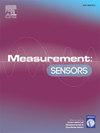基于熵的SDN_IOT随机方法DDOS攻击早期检测与缓解
Q4 Engineering
引用次数: 0
摘要
软件定义网络(SDN)的特点是网络中控制平面和数据平面的分离。数据包由数据平面转发,而路由决策则由控制平面做出。这种分离使网络具有更大的灵活性和可编程性。这是一项大有可为的技术,能使物联网网络性能更好、更安全、更易于管理。不过,在物联网环境中广泛采用 SDN 之前,还需要应对一些挑战。请求可能来自各种来源,包括被攻击的计算机、僵尸网络,甚至是被诱骗访问恶意网站的合法用户。基于熵的随机方法可防止 SDN 控制器发生故障,其目标是在早期阶段检测和缓解 DDoS 攻击。所提出的基于熵的 DDoS 检测算法(EDDA)通过分析传入数据包的熵波动来检测攻击,从而保护传感器生成数据的完整性,并在网络设备上动态配置速率限制机制,以限制数据包的传输速率。利用我们提出的方法,可以使用较低的计算能力高精度地检测到 TCP、UDP 和 ICMP SYN Flood 等 DDoS 攻击。由于采用了所提出的解决方案,在 9 台交换机连接 70 台主机的情况下,利用基于 SDN 的技术检测并缓解了 DDoS 攻击,而且检测准确率高,检测时间大大缩短。通过集成熵作为测量参数,所提出的系统能有效区分合法和恶意网络流,确保传感器驱动的物联网网络中数据传输的稳定和安全。本文章由计算机程序翻译,如有差异,请以英文原文为准。
Entropy based earlier detection and mitigation of DDOS attack using stochastic method in SDN_IOT
Software-defined networking (SDN) is characterized by the separation of control plane as well as data plane in the network. Data packets are forwarded by the data plane, while routing decisions are made by the control plane. This separation of concerns allows for greater flexibility and programmability in the network. It is a promising technology that can allow IoT networks to perform better, be more secure, and be more manageable. However, there are some challenges that need to be addressed before SDN can be widely adopted in IoT environments. The requests can be made from a variety of sources, including compromised computers, botnets, and even legitimate users who have been tricked into visiting a malicious website. Detecting and mitigating DDoS attacks at an early stage is the goal of a stochastic method based on Entropy that prevents failure of SDN controller. The proposed algorithm Entropy based DDoS Detection algorithm (EDDA) detects the attack by analyzing entropy fluctuations in incoming data packets, thereby preserving the integrity of sensor-generated data and dynamically configure rate-limiting mechanisms on network devices to restrict the rate at which packets can be transmitted. With our proposed method, DDoS attacks like TCP, UDP, and ICMP SYN Flood can be detected with high accuracy, using less computing power. As a result of the proposed solution, DDoS attacks are detected and mitigated using SDN-based techniques under 70 hosts connected within 9 switches with a high degree of detection accuracy and significantly low detection time. By integrating entropy as a measurement parameter, the proposed system effectively distinguishes between legitimate and malicious network flows, ensuring stable and secure data transmission in sensor-driven IoT networks.
求助全文
通过发布文献求助,成功后即可免费获取论文全文。
去求助
来源期刊

Measurement Sensors
Engineering-Industrial and Manufacturing Engineering
CiteScore
3.10
自引率
0.00%
发文量
184
审稿时长
56 days
 求助内容:
求助内容: 应助结果提醒方式:
应助结果提醒方式:


